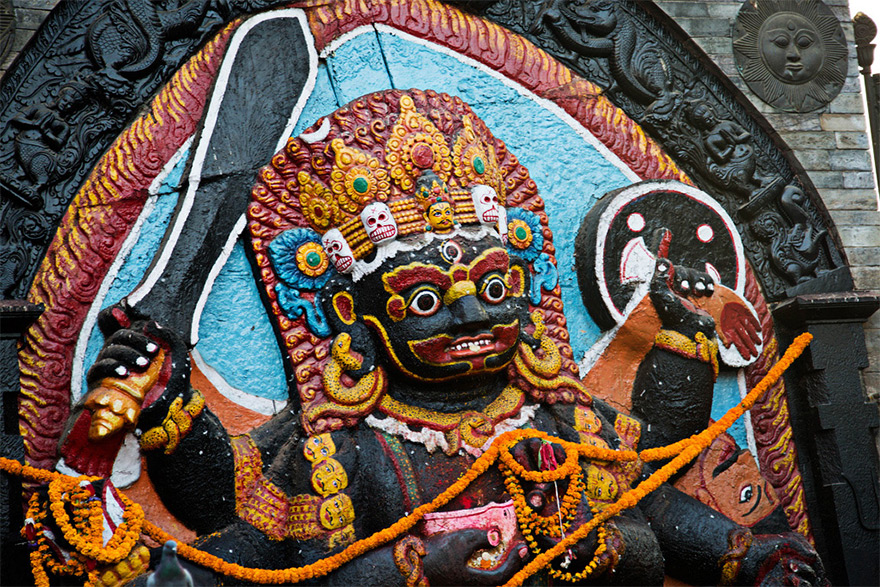Kala Bhairava is a fierce manifestation of Lord Shiva and is highly revered across the Indian subcontinent. He is depicted in an aggressive form with angry eyes shaped like lotus blossoms, blazing hair, tiger’s teeth, and snake coiled around his neck or crown, and an eerie garland of human skulls. Often terrifying, Kala Bhairava carries a trident, a drum and the severed fifth head of Brahma.

The deity is blue throated from swallowing poison to save the world. Hence, he is considered to be the vanquisher of death. His third eye represents eternal supreme wisdom. There are many interesting legends surrounding Kala Bhairava, one of the eight avatars of Lord Shiva. The first syllable ‘Bhai’ means fear and also lustrous light. It is said to endow one with material wealth. ‘Rava’ means echo.
While ‘Ra’ casts off negativity and restricted consciousness, ‘Va’ keeps creating opportunities.
In totality Bhairava denotes that by using fear we can attain ‘aseem anand’ or extreme delight. Lord Bhairava is also known as ‘Kotwal’ or ‘Kshetpalaka’, the guardian of the temple. The keys to Shiva and Shakti temples are ceremonially submitted to Bhairava at closing time and received from him at the opening time in the morning. The Siddhas state that before embarking on a journey, especially while travelling at night, one must light diyas (lamps) and garland Lord Bhairava with cashew nut wreaths.
This assures protection and safety. For those abroad away from the blessed shores, the worship is equally important. The Ashtami after Poornima (the eighth day after full moon) is said to be the most ideal day for pooja rituals. There are elaborate ceremonies in the 12 Jyotirlinga Shiva shrines in Kasi, Tiruvannamalai, Ujjain and others, which have special rights and sacraments on this day.























